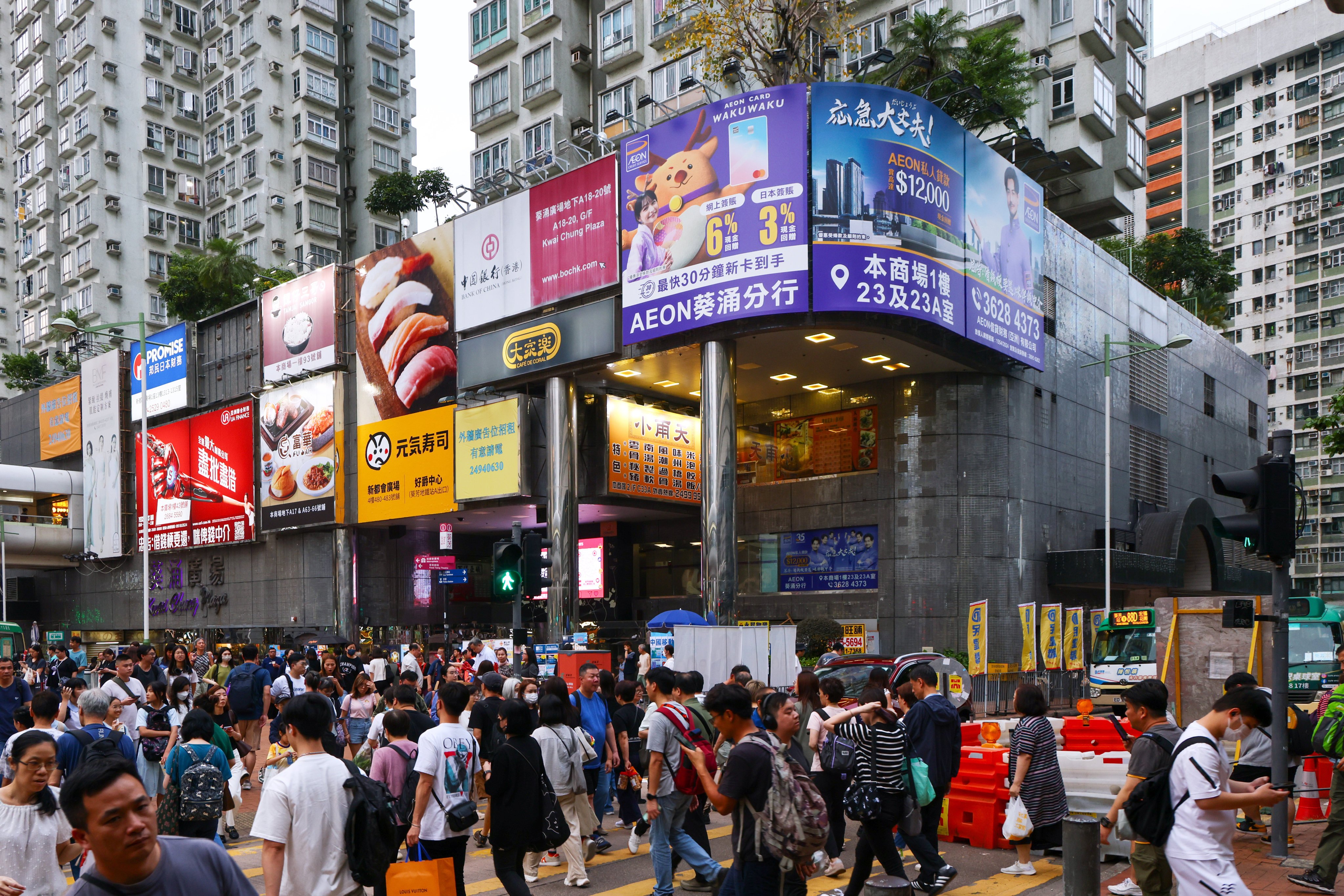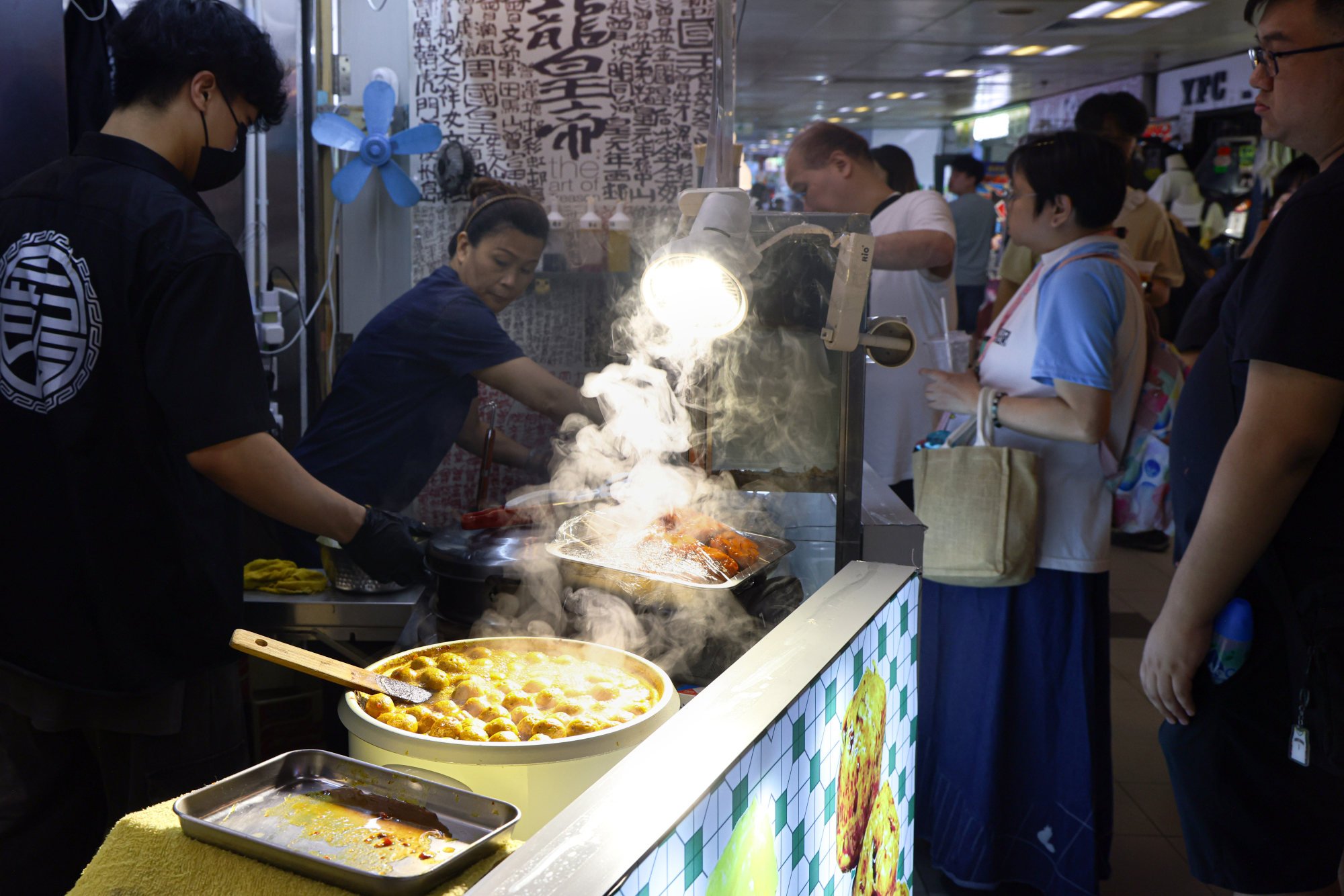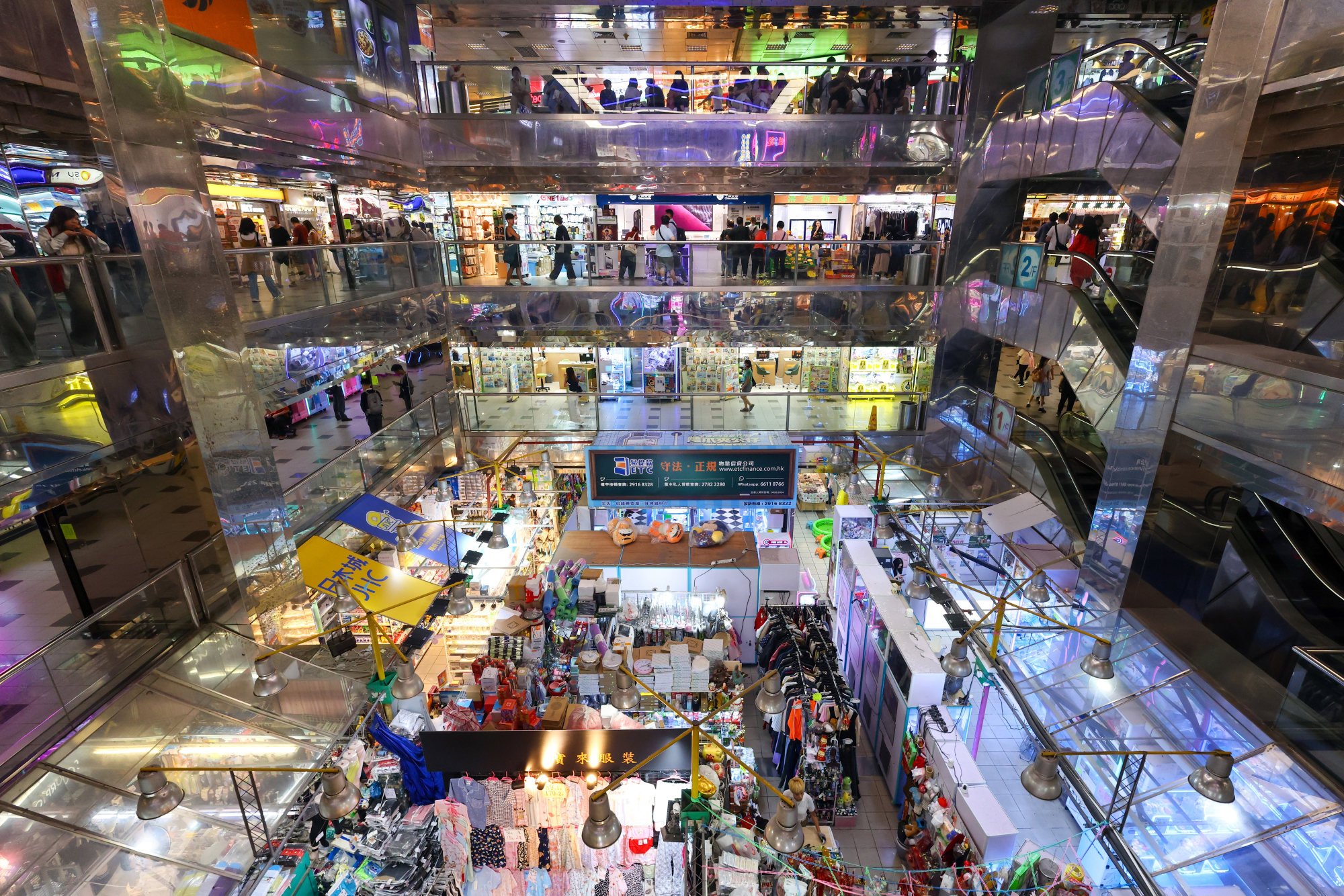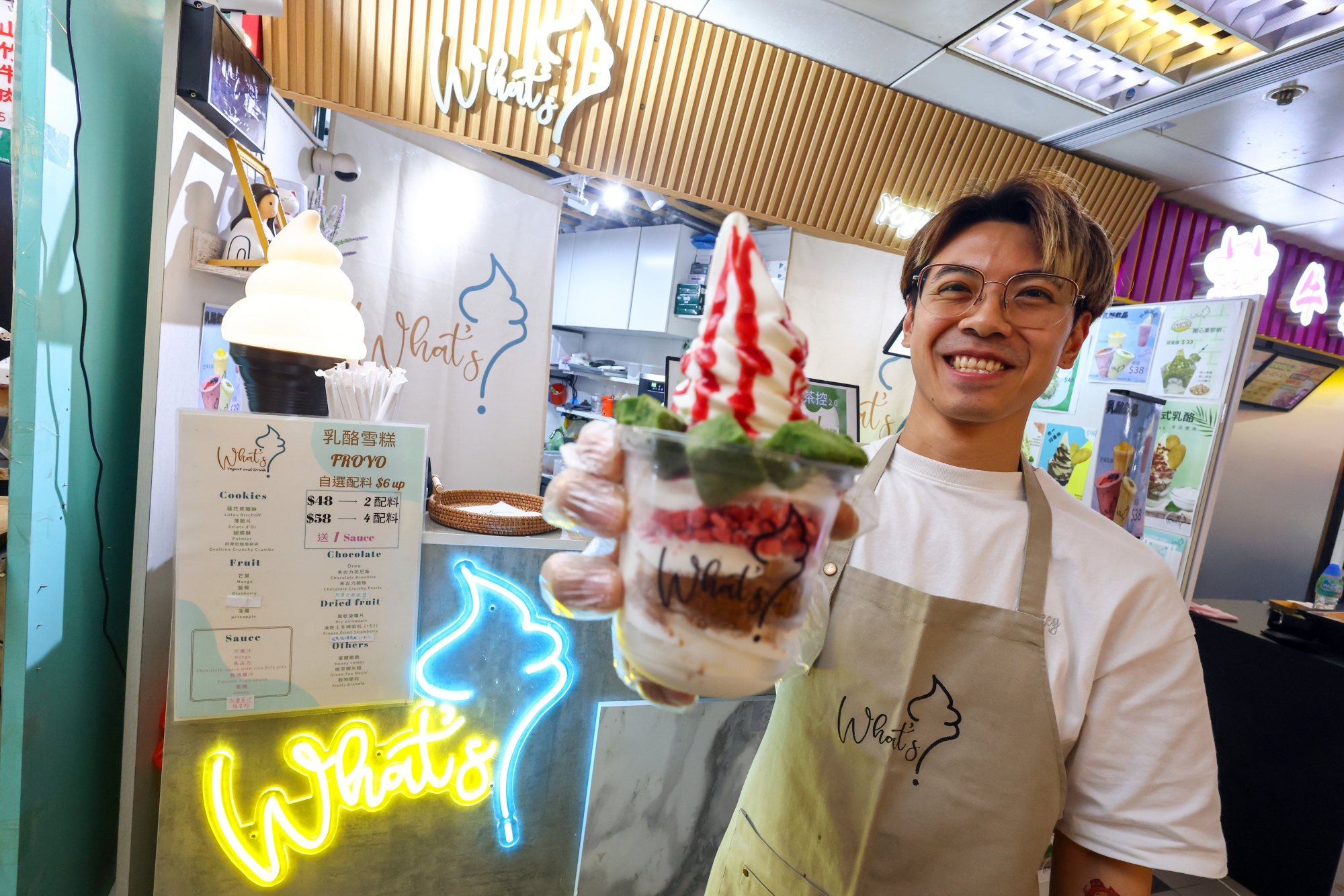How Kwai Chung Plaza Became An Affordable Culinary Hotspot For Hongkongers

Jarita Mak Shun-ting starts her Wednesday morning by preparing beef patties for her signature sliders before the lunch rush starts at her shop in Hong Kong’s Kwai Chung Plaza.
She opened her shop, Wagyu Butler, more than a month ago and offers small bites ranging from mini burgers and meatballs to dumplings and instant noodles at prices going from HK$18 (US$2.31) to HK$62.
Her bestseller is her beef sliders, with her Hong Kong take on the dish served with either satay or yuzu sauce.
“Kwai Chung Plaza is a place filled with innovative snacks, and I want to sell what I’ve created here, too,” Mak said.
The plaza, a shopping centre and private housing estate in Kwai Tsing district, is a rarity among the city’s malls.
Packed with small, independent, family-run shops, claw machines and mini gaming arcades, it contrasts with other larger malls that some are saying have become generic due to many of them hosting similar chain stores.
One of the reasons the plaza is able to attract customers is thanks to its food stalls on the shopping centre’s third floor, which offer fishballs, egg waffles, bubble tea and fresh fruit juices, among other treats.
It has also become a popular spot for many small vendors looking to test the waters with their new dishes and beverages.

Mak said that since starting her business, she has spent up to HK$800,000 to secure the 200 sq ft store property, renovate it and obtain the necessary licences, alongside other expenses. She said she considered it an acceptable price to get a small business off the ground.
“Whenever Kwai Chung Plaza is mentioned among Hongkongers, they know it’s a landmark for food,” she said.
Local student Sean Choi is a regular plaza patron and heads there two to three times a month to eat favourite dishes such as takoyaki – a savoury Japanese ball-shaped snack made with batter and octopus – and banana pancakes.
The 19-year-old said he felt that while the shopping centre was unique because it catered mostly to locals, such places were few and far between.
“There are many types of food you can’t find anywhere else. It’s a well-known place among Hongkongers that has food and shopping at prices that students could afford,” he said.
“Many other malls have only luxury brands; you won’t shop there every day.”
The shopping centre is also starting to enjoy growing popularity among tourists.
Seven Cao, a 19-year-old student from Guangzhou, said she had visited the mall after an influencer recommended the place on social media.
“This shopping mall feels more local than other ones in the city, from its decor to its offerings,” she said.

Architect Alfred Ho Shahng-herng, founder of the Urban Studies Institute, pointed out that the variety of independent shops at the plaza was possible thanks to the lack of uniform ownership and management of the stores compared with other malls.
Ho recalled that when Link Reit was publicly listed in 2005, the company started renovating about 180 properties, including shopping centres previously under the Housing Authority, in a similar manner over the following decade.
The result was that many shopping centres had an increasingly homogenous look to their interior, he said.
Another reason many Hong Kong malls felt the same was down to their similar product offerings due to each location’s management tending to bring on chain stores or brands they have worked with at other locations, in a bid to reduce risk, Ho added.
“Before this phenomenon, malls such as Kwai Chung Plaza were not valued. It was against this backdrop that people longed for something more uniquely local that made them popular again,” he said.
He pointed out that the plaza’s popularity was also because of its proximity to an MTR station and that its size allowed it to host many shops.
Back at the plaza, Mak’s place is next to What’s Yogurt and Drink, a frozen yogurt shop spanning less than 100 square feet founded by Joe Liu Cho-kuen and his wife two years ago.
The shop offers fresh fruit smoothies blended with regular or frozen yogurts and served with a wide variety of toppings and sauces. Its toppings include home-made matcha mochi, honeycomb, fresh and dried fruits, with prices ranging from HK$33 to HK$58.
Liu said the couple had just renewed their tenancy at the shopping centre.
“It’s a place with an endless number of shopfronts – big and small, pricey and affordable. You name it, it’s there,” he said.
“For something more economical, you can rent a shop here at just more than HK$10,000 and you can begin right away.”

Liu said the small number of chain stores at the plaza left room for shops with more individual characters, in turn helping the shopping centre to retain its distinctly local flavour.
“There are localised versions of overseas snacks. For example, takoyaki, there are hardly so many different flavours or varieties in Japan, but here you could easily get over a dozen that cater to the market,” he added.
Liu observed that vendors were highly competitive about getting any empty shop fronts that popped up, with stores constantly changing hands and contrasting with vacant spots in streets across the city.
This competition spirit also extended to attracting patrons, he added.
He expressed confidence in the fact that the place’s unique food culture would ensure its survival.
“Kwai Chung Plaza is a place where you can find everything. It’s like a condensed city,” he said. “I can’t think of another place like this in Hong Kong.”


